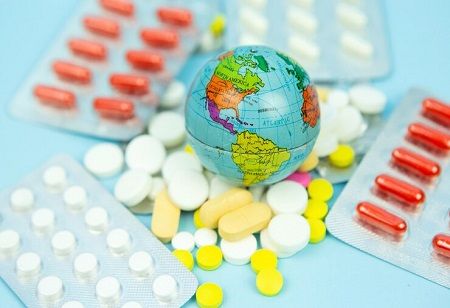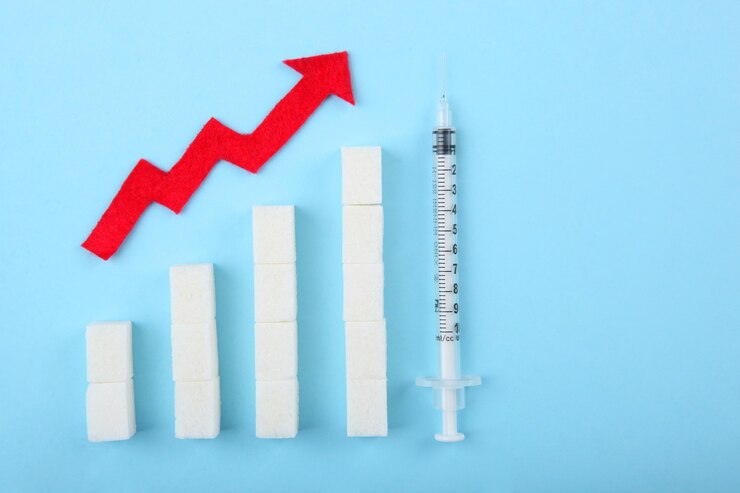Zeenat Parween, Correspondent, India Pharma Outlook

The last ten years have seen unprecedented international momentum in GLP-1 obesity and diabetes treatment with injectable preparations changing the standard of care. The introduction of oral GLP-1 drugs is now a significant breakthrough, and it provides patients with a convenient alternative. This change of injections to oral GLP-1 obesity treatment and oral GLP-1 diabetes care may transform the long-term metabolic health management. However, today the discussion is not confined to clinical results; GLP-1 patient access, its cost, and fair allocation of such treatments have become the focus of the discussion in every part of the world. To many, the GLP-1 weight loss pill represents more than just a scientific innovation; it represents a challenge of how innovation can be integrated with global health equity.
The GLP-1 pipeline in 2025 is saturated with oral formulations in development or approved including the oral semaglutide approval which opened the door to increased uptake. In comparison with injectables, oral formulations overcome treatment fatigue and GLP-1 convenience vs injection, which is a determining factor among patients. The oral GLP-1 market is increasingly popular as obesity drugs take center stage, making the obesity pill breakthrough one of the most discussed innovations of 2025.
In spite of enthusiasm, the GLP-1 affordability challenges are deep. The expensive nature of oral obesity treatment options is a hindrance to the adoption, particularly among the lower-income population. Also, insurers and payers remain cautious, with GLP-1 payer strategies and GLP-1 medication coverage policies varying widely. Although the U.S. and some regions of the EU have experienced more notable coverage expansion, the rest of the world has not been able to access oral GLP-1 drugs equally, leaving emerging economies behind. The cost challenge of oral GLP-1 medication is a challenge that may make the democratization of these drugs difficult.
Also Read: How Pharma Contract Manufacturing Can Win Big in Weight-Loss Drugs
The clinical effectiveness of oral formulations is strongly  supported by evidence. GLP-1 weight loss pill effects in obesity show significant decreases in body weight in comparison to injectable therapy. Furthermore, the oral GLP-1 diabetes care has demonstrated outstanding HbA1c reduction, enhanced glycemic control, and favorable GLP-1 cardiovascular effects in diabetes, which extend beyond glucose management. To add further, the next-generation oral GLP-1s and combination therapy are expanding the limits of what oral GLP-1 clinical trial efficacy will be able to achieve by 2025, further fueling the obesity and diabetes drug market growth.
supported by evidence. GLP-1 weight loss pill effects in obesity show significant decreases in body weight in comparison to injectable therapy. Furthermore, the oral GLP-1 diabetes care has demonstrated outstanding HbA1c reduction, enhanced glycemic control, and favorable GLP-1 cardiovascular effects in diabetes, which extend beyond glucose management. To add further, the next-generation oral GLP-1s and combination therapy are expanding the limits of what oral GLP-1 clinical trial efficacy will be able to achieve by 2025, further fueling the obesity and diabetes drug market growth.
Dr. Shashank Joshi, Endocrinologist, Mumbai, on overcoming injection barriers said, “Peptide and protein-based biological medicines are typically very effective, their only drawback being delivered as injectables… Oral semaglutide represents a game changing innovation for both patients and HCPs … with the ease of oral administration combined with the benefits of a GLP-1 RA.”
The GLP-1 obesity drug race is influenced by giants like Novo Nordisk and Eli Lilly, as they are the leaders in the oral formulations race. Pipelines are being grown through licensing partnership and collaboration as oral semaglutide brand names have already become household names across the world. The surge in pharma investment in obesity drugs underscores investor confidence in the category. Although the problem of shortage of GLP-1 drugs affects supply chains, the medium- and long-term development of the oral GLP-1 market is expected to be promising.
“The results we got were as good as we can possibly achieve with an oral small-molecule GLP-1… The safety, tolerability, and efficacy were all in line with what we achieved with the injectable drug, yet now delivered in an easy-to-use, once-a-day pill.” — Dr. Dan Skovronsky, Chief Scientific & Medical Officer, Eli Lilly.
 Policy & Regulatory Lens
Policy & Regulatory LensThe regulatory approvals play the key role in influencing the adoption of GLP-1 therapy and in timely access. Patients in areas where agencies have streamlined the review process receive faster treatment, and other jurisdictions are left behind. The programs in public health are starting to examine the possibility of addressing the affordability of oral GLP-1 on obesity patients in national formularies. Meanwhile, patient advocacy groups put pressure on pricing, demanding policies that provide GLP-1 insurance coverage and a more equitable distribution along social economic lines.
"It's not a technology that lends itself for dominating global rollout, that will have to be injectable," said Lars Fruergaard Jorgensen, Chief Executive, Novo Nordisk.
Also Read: Why Global Pharma Expects CDMOs to Be Ready for Joint Inspections
With mounting evidence, oral GLP-1 drugs are slowly becoming embedded in obesity and diabetes clinical practice guidelines transforming the standard of care. Technology-driven patient engagement through apps, telemedicine, and digital adherence tools will accelerate uptake and help reduce disparities. The future of oral GLP-1 therapies in diabetes care will depend on a balance between innovation and fair implementation. In the end, the future trend of the oral GLP-1 market will rely on the ability of these drugs to break the barriers and actually democratize care globally.
The next frontier in metabolic health is Oral GLP-1 drugs, which combines clinical innovation with the capability to transform the way millions of people treat obesity and diabetes. However, success is determined by a balance between science with GLP-1 affordability issues, equitable GLP-1 patient access, and enabling policy frameworks. The promise of the GLP-1 weight loss pill and oral GLP-1 diabetes care will only be fully realized if innovation, affordability, and equity move in step. The real test is whether these therapies will not only advance medicine but also ensure inclusive, global access.
Yes, clinical trials show that newer oral GLP-1 drugs (like high-dose oral semaglutide and Lilly’s orforglipron) deliver weight loss and HbA1c reductions comparable to injectables, though some patients may respond better to injections.
Not immediately—GLP-1 affordability challenges remain, as pills are costly to produce. Over time, competition, payer coverage, and scaling could improve access and affordability, especially in wealthier markets.
Novo Nordisk (oral semaglutide) and Eli Lilly (orforglipron) are leading, with Pfizer pursuing pipeline candidates. These firms dominate the oral GLP-1 market alongside other pharma players exploring partnerships.